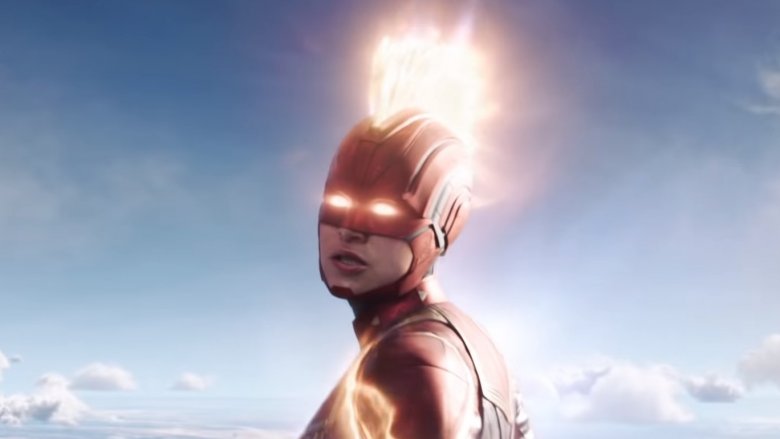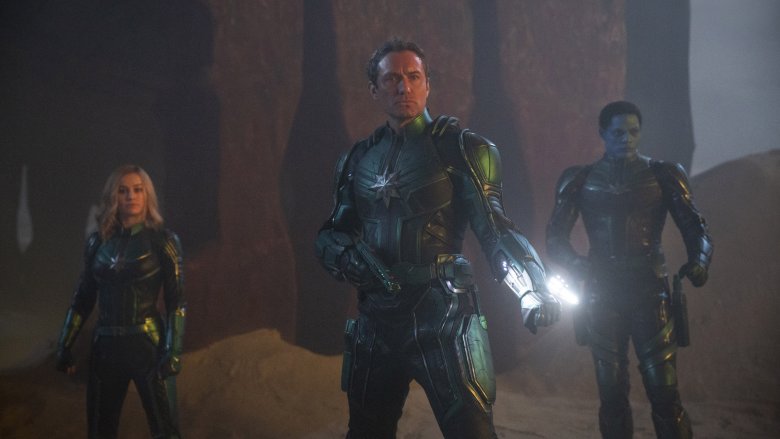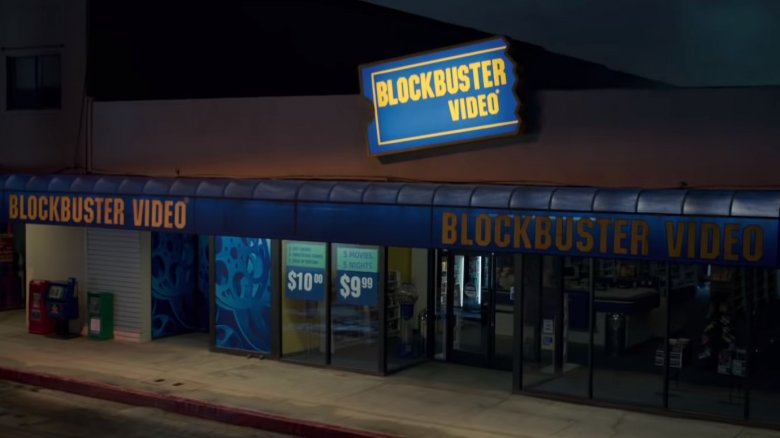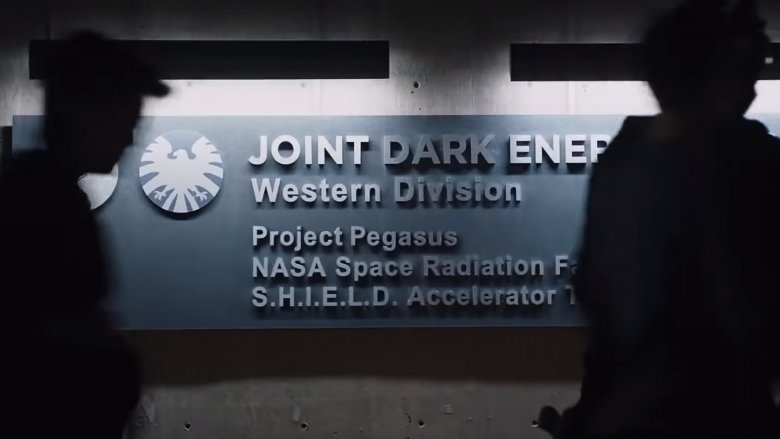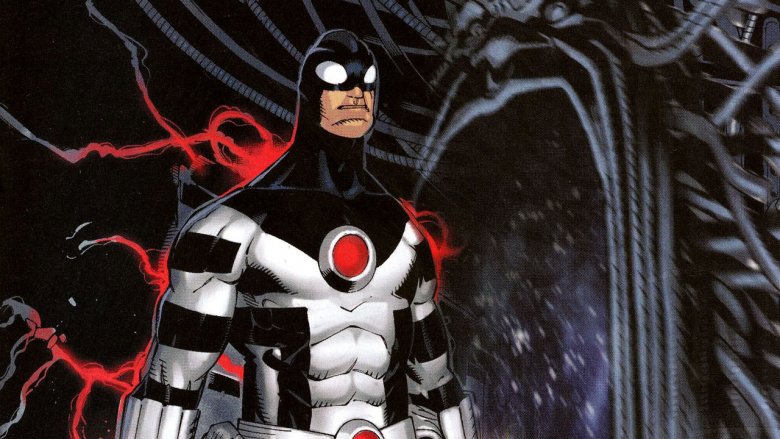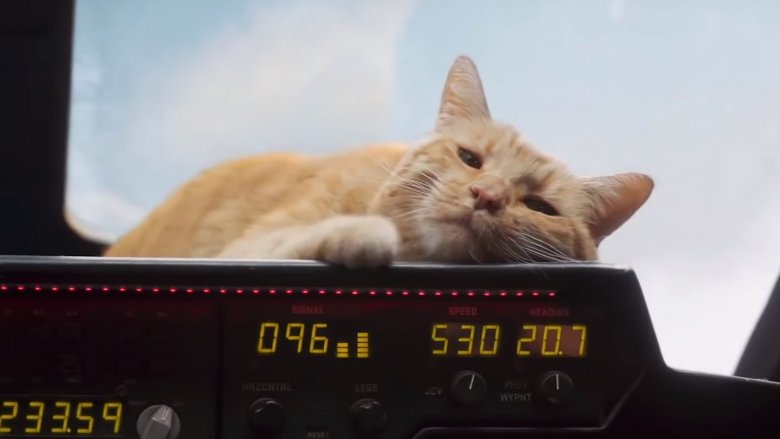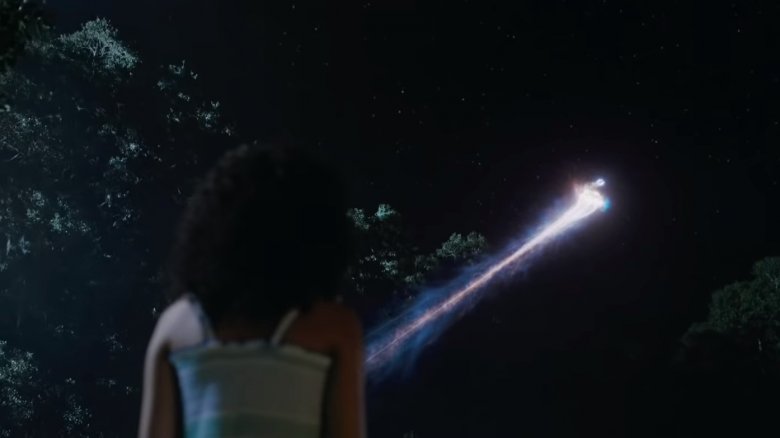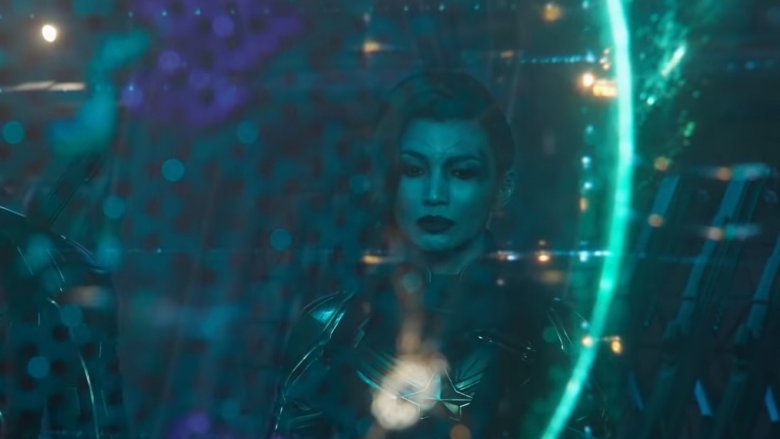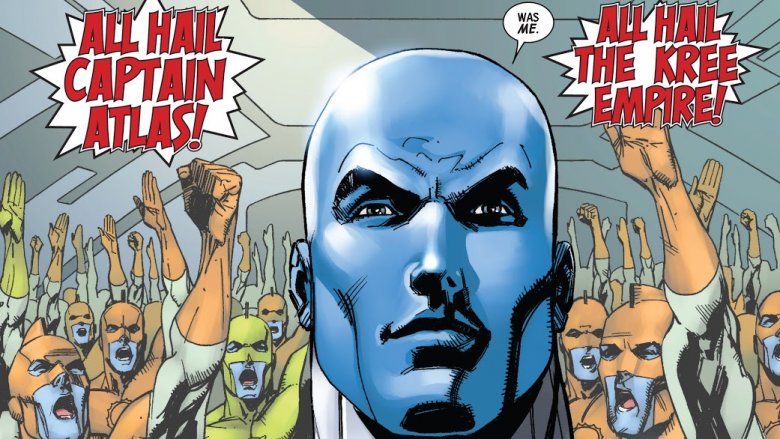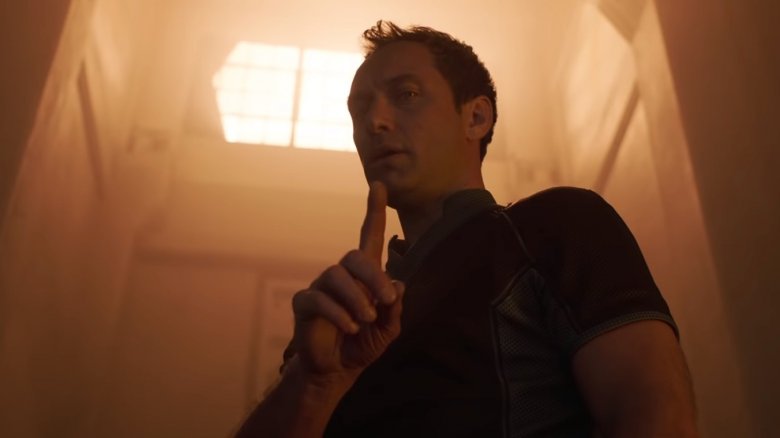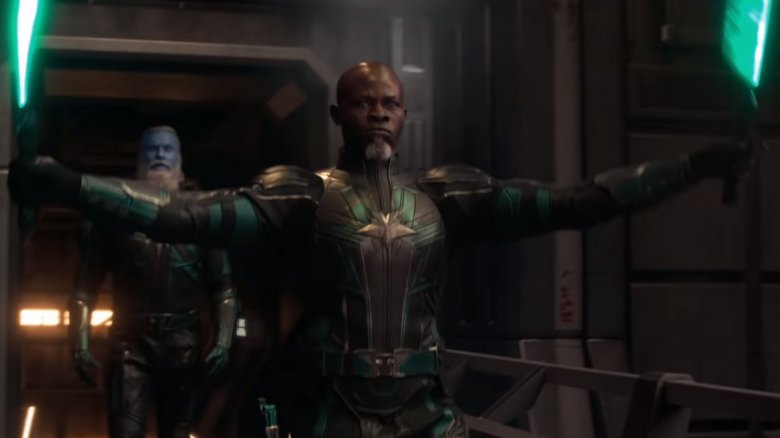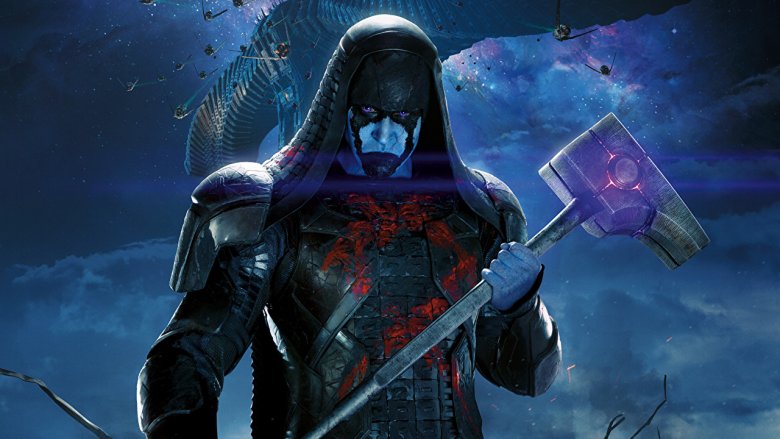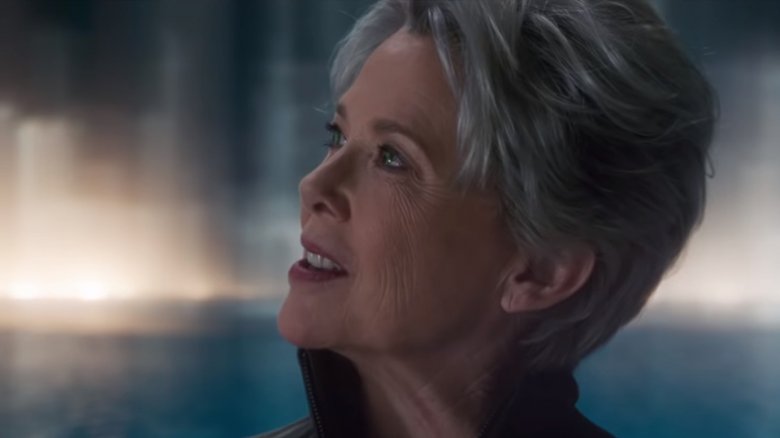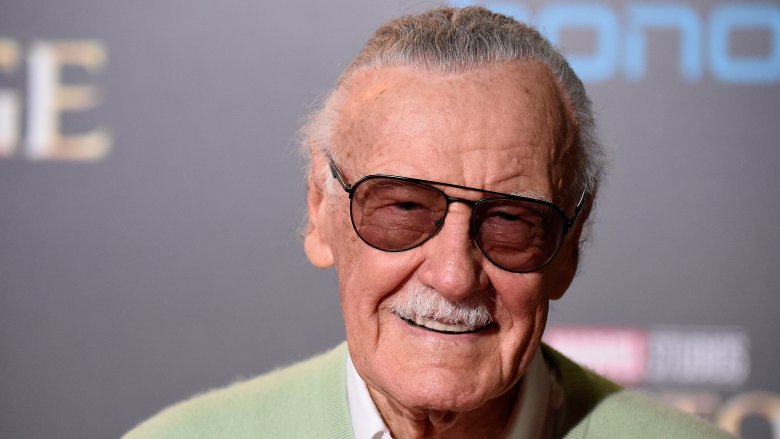Small Details You Missed In Captain Marvel
Marvel's most powerful superhero has finally arrived on the big screen, leaving absolutely no doubt that Carol Danvers will go on to play a vital role in upcoming storylines. As an origin story, an Endgame prelude, and a '90s buddy comedy all rolled into one, Captain Marvel definitely had a lot riding on its superpowered shoulders, and it delivered in every way that counts... especially if you're a cat person.
Like any action-packed Marvel fest, there were plenty of references onscreen that were easy to miss amid all the photon blasts and space battles. With a whole roster of new faces and names — not to mention a wealth of comics backstory going back decades and a soundtrack straight off of your cousin's Xanga profile — Captain Marvel has plenty to pick apart. From characters with secret futures to sneaky wardrobe changes to in-joke Easter eggs, here are all the small details you missed in Captain Marvel. Spoilers ahead!
Original colors
One of the film's biggest moments comes when Carol Danvers finally discovers her true colors — both figuratively and literally. Upon deciding to ditch the Kree and help the Skrull refugees, Carol figures she needs a new look to match her new mission. Fortunately, the Kree suit-makers programmed a Sims wardrobe module into her handy dandy wrist gadget, allowing her to switch up her suit's design right then and there.
With the help of young Monica Rambeau, Carol flashes through all the colors of the rainbow before settling on the iconic blue-red-yellow look that fans of the comics couldn't help but cheer for. But right before her final colors, her suit rests for a moment on a mild green-and-white color scheme that might be familiar to die-hard comics fans.
In Captain Marvel's first comics appearance (as Mar-Vell) in Marvel Super-Heroes #12, the Kree hero wears a suit with the same colors. Even though it was only on-screen for a few seconds, it was a clever nod to the superhero's origins — and more than a little fitting that it appeared as a precursor to her current suit design.
They blue it
Sharp-eyed audience members might have noticed a strange discrepancy in the way the Kree were portrayed. Most of the Kree we see on-screen have blue skin — Minn-Erva, Att-Lass, Ronan, the list goes on. There are only a few exceptions to this that we see: Carol Danvers, who is obviously human to begin with, and Yon-Rogg, a true-blue Kree in every sense but the color. So what gives? Was it a mistake by the filmmakers? Did Jude Law just decide not to Funke himself for production?
As it turns out, that was deliberate. Although it's never mentioned in the film, Captain Marvel #38 explains that when the Kree race began their conquest of space, they mated with other species and created so-called "pink-skin Kree," a variant of the species that looks, conveniently, like Caucasian humans.
Mar-Vell also has this trait, which is one of the reasons she was able to stay on Earth as Dr. Lawson and work on her project for the Skrulls without drawing attention to herself. That's lucky for her; people in the office tend to notice a blue person after the third or fourth day.
The right foreshadowing
As a film, Captain Marvel really starts gaining momentum when Carol Danvers crashes through the roof of a Blockbuster on Earth — or planet C-53, as the Kree know it. It's a good moment for a laugh, especially if you happened to live through that bizarre period of time known as the mid-'90s, Smashing Pumpkins posters and all. After photon blasting a cardboard cutout of Arnold Schwarzenegger in a True Lies promo display, Carol wanders down the aisle, marveling at the human culture of the '90s.
At one point, she picks up a VHS and examines it, then puts it back on the shelf. If you were paying attention, you might have noticed that the video she looks at is The Right Stuff, a 1983 film about seven pilots who train to become the first Americans in space.
It's a fitting movie for her to pick up, since the burgeoning astronauts in The Right Stuff have an arc that mirrors Carol Danvers' own path through the film — after remembering her past as an Air Force pilot, she flies into space in a modified Air Force craft. Using a relatively obscure '80s film as foreshadowing isn't the type of set dressing that'll get noticed by most of the audience, so it's likely that very few people picked up on the significance of this little detail.
Project PEGASUS
There was one thread woven throughout the plot of Captain Marvel that was never fully explained, despite the impact it's had over the years. That was Project PEGASUS, the joint Air Force and NASA project headed by Dr. Lawson, a.k.a. Mar-Vell.
As it turns out, PEGASUS isn't a new creation, even in the MCU. Marvel Studios first sowed the seeds of the project in 2012. Before The Avengers was released, Marvel put out a short prelude comic entitled "Fury's Big Week." The comic connected elements from Captain America: The First Avenger, The Incredible Hulk, and Iron Man in preparation for the big cinematic team-up, and it introduced Project PEGASUS for the first time. And if you go back and watch The Avengers closely, you can see that the opening scene (in which Loki appears and steals the Tesseract) occurs at the PEGASUS facility.
Of course, the movies aren't the first shebang for Project PEGASUS, which has been around in the comics for quite a while. Nominally a research center for powerful energy sources, the facility has also served as a makeshift prison for supervillains over the years. Notably, PEGASUS was once the workplace of Wendell Vaughn, who became the superhero Quasar and later took the mantle of Protector of the Universe after Captain Marvel died. And yeah, that's as important as it sounds.
The Protector Initiative
In the film's conclusion, young Nick Fury is contemplating the events of the past few days and considering a new plan to seek out superheroes to protect the Earth. He reasons that since they just had a run-in with a whole bunch of aliens, there have to be more superpowered folk out there. He initially has the name "The Protector Initiative" on his computer screen before he notices Carol Danvers' Air Force call sign — Avenger — and changes it to the name we've all come to love.
It's the kind of thing that works as a callback to past films — and future events — but there's actually a second layer to the scene. See, if you haven't noticed by now, there have been a lot of people who called themselves Captain Marvel over the years. One of them was another Kree warrior, Noh-Varr. In 2009's Dark Avengers, Noh-Varr is recruited by none other than Norman Osborne to join a new team of Avengers under the mantle of Captain Marvel. He agrees, and for six bizarre issues he battles alongside the likes of Wolverine's son and Venom in disguise as Spider-Man.
Eventually, though, Noh-Varr leaves the team and is given a new name by the Supreme Intelligence: Protector. Sure, it's a footnote in Captain Marvel history, but name dropping yet another past Marvel in "The Protector Initiative" was a nice nod.
Goose
If there's one character who stole the show in Captain Marvel, it was definitely Goose, the unassuming tabby who tagged along with Danvers and Fury in their adventures. Who knew Fury was such a cat guy?
Of course, there's a lot more to this cat than meets the eye. For starters, the name is clearly a subtle nod to Top Gun, in which Anthony Edwards' character, codenamed "Goose," is a Navy pilot. Aside from that, though, there's also the small detail of the purple people-eating tentacles that sprout out of Goose's mouth, and the fact that Goose isn't even a cat at all — he's a Flerken, an alien species that just happens to look like a cat.
Flerkens were first introduced to Marvel Comics readers in 2014 in the pages of Captain Marvel, when it turned out that Danvers' cat, Chewie, was secretly one of the tentacle beasts in disguise. After being attacked by Rocket Raccoon, who saw Chewie for the Flerken he was, Chewie finally unleashed the beast and saved Rocket's life. Aww, good kitty.
Photon finish
Young actress Akira Akbar turned in a fine performance as Monica Rambeau, the 11-year-old daughter of Carol's friend and fellow pilot Maria Rambeau. Monica was there during some of the film's most hard-hitting moments, helping Carol Danvers remember her past and giving the discovery that extra emotional edge. Heck, she even helped Carol pick the right colors for her new suit.
But one particular line of dialogue carried more significance than it may have seemed to. When Carol and Maria are about to leave for Dr. Lawson's orbiting laboratory, Monica asks if she'll eventually get to go into space, too. That leads to the seemingly casual line, "Only if you learn to glow like your auntie."
But here's the thing — Monica does learn to glow like her auntie. Her name has changed over the years, but fans may know her best as Photon, a hero with the ability to harness electromagnetic forces. In her current incarnation, Monica Rambeau goes by the name Spectrum, and there was even a time when she flew under the Captain Marvel mantle. In fact, when Monica's character debuted in a 1982 issue of The Amazing Spider-Man, she was billed as the "all new, all-different, all-terrific Captain Marvel."
Another nod to Monica's comic-book counterpart can be seen on the side of Maria's fighter, which has the stencil "Maria 'Photon' Rambeau." Does this foreshadow big things in the future for little Monica? Maybe, maybe not. Either way, it's an exciting detail from the comics.
Minn-Erva
Played by Gemma Chan, Minn-Erva is one of the Starforce members who join Danvers in the battle on Torfa early in the film. Minn-Erva has a fairly significant comics presence, and she's been involved in some seriously twisted plots. She's as Kree as they come, fiercely loyal to her race and often willing to go to extreme lengths for the betterment of the Kree civilization.
In one particularly heinous plan during the Civil War event, Minn-Erva (or Minerva, as it's spelled in the comics) tried to release a biological weapon in California that would have turned people into mutated monsters. Captain Marvel was able stop her, even though Minn-Erva turned into a giant mutation herself during the fight.
In another instance, she was part of the Supreme Intelligence's plan to destroy 90% of the Kree population to make the remaining 10% stronger than ever. Yeah, that's not the kind of person you really want on your team. Or even in your species, if we're being honest.
Att-Lass
Like Minn-Erva, Att-Lass has had his share of comics page-time, although to a lesser extent. In the film, he's a member of Starforce under the command of Yon-Rogg, rarely stealing the spotlight — his most memorable moment has him getting mimicked by a Skrull. Nevertheless, there's more to this blue-faced warrior than meets the eye. In addition to his involvement in Operation: Galactic Storm, a massive crossover event that put Earth in the middle of a war being fought by the Kree and Shi'ar, Att-Lass has also shown up as the villainous Titanium Man.
In the Infinity: Heist miniseries, Att-Lass becomes Titanium Man to join a crew of villains robbing Stark Tower. There, he unmasks himself and reveals that the Kree were behind the heist the whole time, causing the rest of the bad guys to turn against him, and he gets killed in the melee. Ah, well... not everyone can be a criminal genius.
Yon-Rogg
Back when Jude Law was announced to be part of the Captain Marvel cast, most of the internet speculated that he was going to play the role of Mar-Vell. They were wrong, of course — his real role is that of Yon-Rogg. It turns out, Marvel had good reason to keep Law's role a secret. See, Yon-Rogg is a well-known enemy of Mar-Vell's, so fans might have seen the twist in Captain Marvel coming a mile away.
In the film, Carol Danvers eventually discovers that Yon-Rogg killed Mar-Vell at the crash site of her experimental plane, then took Danvers hostage after she absorbed the power core he'd been after. That pretty much reflects his incarnation on the page. One detail fans may not have caught about this whole reveal is that it mirrors a similar moment in the comics... though with a much different outcome.
In 1969's Captain Marvel #18, Mar-Vell faces off against Yon-Rogg, who's kidnapped an Earth girl named — you guessed it — Carol Danvers, and kept her prisoner near a powerful Kree machine called the Psyche-Magnitron. After Mar-Vell and Yon-Rogg fight, the Psyche-Magnitron explodes with a mighty SHROOM and seemingly kills Yon-Rogg while simultaneously knocking some superpowers into Danvers. In both the comics and cinematic universes, then, Yon-Rogg is directly responsible for Danvers gaining her powers.
Korath the Pursuer
One member of the Starforce team is much more recognizable than the others. Korath the Pursuer, played by Djimon Hounsou, is no stranger to the MCU. He first appeared on screen in the opening moments Guardians of The Galaxy, where you may remember he tried to take the Power Stone from Peter Quill. He showed up again on the Battle of Xandar and proved to be a formidable opponent... at least until Drax ripped off part of his head.
With Captain Marvel, we get to see a younger Korath in his prime, still kicking ass and still, well, kicking in general. Of all the Starforce members, Korath is certainly one of the most powerful. As a geneticist, he took to modifying his own body with all kinds of cybernetic sci-fi implants, giving him superstrength and speed. Casual fans may not know that in the comics, he's gone up against the likes of Captain America, Scarlet Witch, and Adam Warlock. Those are big foes, but to be fair, he does usually come out on the losing side.
Ronan the Accuser
Another no-doubt familiar face in Captain Marvel is that of Ronan the Accuser, who's name dropped early in the film before making his first big appearance during the climax. You know — he's the blue guy with a big hammer. Fun fact: that hammer is known as the Universal Weapon, and it grants him such abilities as "transmutation of matter" and "interstellar transportation."
Why don't we ever see any of those abilities in the films? Probably for the same reason Ronan's importance is downplayed in general. Fans who haven't caught Ronan in the comics probably don't know that he can shoot lasers out of his eyes, either. Fortunately, Captain Marvel did offer a hint of his full power within the Kree empire by positioning him at the head of the battleship that goes to Earth. In the comics, he's one of the most well-known Kree warriors in a civilization that spans multiple star systems.
Mar-Vell
Of course, if we're going to talk about comics characters whose roles were reduced for the screen, we have to mention Mar-Vell. In Captain Marvel, Annette Bening portrayed the Kree soldier who was moonlighting as Dr. Lawson on Earth. She played an important role in the plot, but of course there's no mention that she's, well, the original Captain Marvel.
With his standalone series launched in 1968, Mar-Vell's version of Captain Marvel contained all the elements of the Mar-Vell we saw on the screen, just without the superpowers. He's a Kree warrior who comes to Earth and decides to protect humanity instead of battling them (in the film, it's the Skrulls Mar-Vell tries to protect, but it's the same idea).
Unfortunately, the hero wasn't very popular at the time. In 1983, writer/artist Jim Starlin came up with the idea to deal with him in the least comic book-friendly way imaginable. In the Death of Captain Marvel graphic novel, Captain Marvel gets cancer and dies. And, at the end of it all, Thanos visits him and takes him on a hallucinogenic journey to fight all his old foes again. It's weird, and strangely heartbreaking.
The Supreme Intelligence
As Yon-Rogg likes to remind us all, the Supreme Intelligence appears as something different to everyone. That's good news for filmgoers, because for years of reading comics, we've just been seeing the Supreme Intelligence as a fat green head in a jar. Phew! Guess it was just us, then.
So, let's jaw about this Supreme Intelligence creature. The film seems to give the impression that it's sort of a therapist for confused or troubled Kree, and sometimes a prison for mutineers. The truth is, it is kind of those things in the comics. Despite being the Kree leader, it rarely seems to have the best in mind for its people. In Avengers #347, for example, the Supreme Intelligence detonated a nega-bomb and almost completely wiped out the Kree. Whoops!
True believer
It was a bittersweet moment to see Stan Lee in his posthumous cameo after decades of contributions to the comic book industry. Captain Marvel fittingly paid tribute in its opening moments, switching out the typical Marvel Studios logo with one dedicated to the late, great Lee. Carol Danvers herself gave the man a nod of respect during his cameo on the train. That in itself was a fine detail, but the film went even deeper with the cameo.
Since Captain Marvel is set during the '90s, Lee appears as himself, reading the script for Mallrats and rehearsing his lines. For those who don't remember, 1995's Mallrats marked one of Stan Lee's first film appearances. Of course, it's much more than a cameo, with Stan giving Jason Lee's character a piece of sage dating advice through the lens of comic books.
There's a good chance we'll see him at least one more time, but Stan's Captain Marvel role (his first live-action appearance after his death in November 2018) has some pretty amazing layers for a cameo. It makes for a perfect send-off, looping back around full-circle to the moment this legendary storyteller first became a screen icon.
Rest in peace, true believer.
